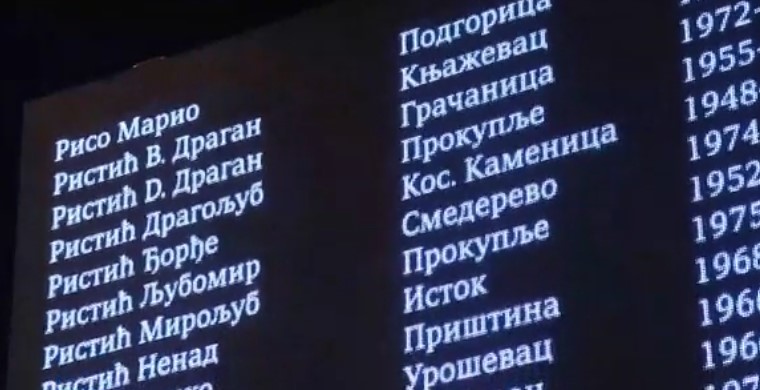On this day, 109 years ago, the genocide of the Armenian people by the Ottoman Empire began, with April 24 being the day of…

It has been 25 years since the start of the NATO air operation against the Federal Republic of Yugoslavia, which became known as Operation Allied Force.
On Sunday night, thousands of citizens gathered at the ruins of the former Headquarters of the Army in Belgrade – the building was severely damaged during air raids and the ruins were preserved as a memorial.
According to Euronews, some of the demonstrators held banners that read “When the army returns to Kosovo”, while others waved Russian flags, some with the symbol “Z”.
Earlier on Sunday, several Serbian cities held memorial services and tributes to the victims of the air strikes. In Belgrade, politicians, military, and foreign diplomats laid wreaths at a memorial for the child victims of the bombings.
A year after the start of the Kosovo War, marred by many serious war crimes, the official cause of Operation Allied Force was Serbia’s refusal to sign the Rambouillet Agreement – a plan that called for a complete Serbian withdrawal from Kosovo.
NATO decided to launch the operation without UN approval – as it was expected that China and Russia would veto any such UNSC decision anyway. This has since sparked debates about the legality of NATO’s actions.
The bombing began on March 24, 1999. The Serbian side claims that in addition to military and infrastructure targets, NATO bombed purely civilian places such as hospitals. The exact number of victims is not yet known. Various sources give very different estimates, from several hundred to several thousand civilians killed.
The operation officially ended on June 10, 1999, one day after the signing of the Kumanovo Agreement, which entailed the full withdrawal of Yugoslavia and Serbia from Kosovo and eventually led to the Republic’s full, if partially recognized, independence.
Also read: Serbia – Kosovo | Agreement on the European peace plan
READ MORE
April 10, 1826 | The heroic Exodus of Messolonghi
Three years after the failed attempt of Kioutachis and Omer Vryonis to capture Messolonghi, the Sultan had a new plan.
Hellenic Army General Staff (HAGS) | Events for the 83rd Anniversary of the Battle of the Forts
On Sunday, April 7, 2024, the 83rd anniversary of the Battle of the Forts (April 6-9, 1941) was celebrated at “LISSE”, “RUPEL”,…
A reluctant alliance? A different approach to French – Serbian defence relations
It has only been a few months since Croatia started receiving the first of the Rafale fighter jets it ordered from France.
Agamemnon | The new Astute-class HMS nuclear submarine of the Royal Navy
The British Royal Navy has named the newly-built Astute-class nuclear-powered submarine HMS Agamemnon. Doing so, the…
NSPA | Awards first C-sUAS multinational contract in NATO’s history
The NATO Support and Procurement Agency (NSPA) has approved the first Counter-small UAS (C-sUAS) procurement framework agreement…
USA | Signs bill on military aid to Ukraine
US President Joe Biden has signed a bill providing Ukraine with billions of dollars in new aid for its war with Russia, marking a rare…
Armenian Genocide Remembrance Day
On this day, 109 years ago, the genocide of the Armenian people by the Ottoman Empire began, with April 24 being the day of…
United Kingdom | Increase in defence spending
Britain will gradually increase its defence spending to reach 2.5% of GDP by 2030, Prime Minister Rishi Sunak announced…





















